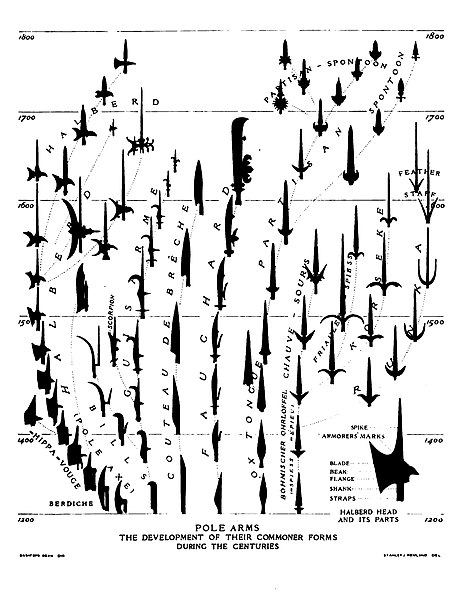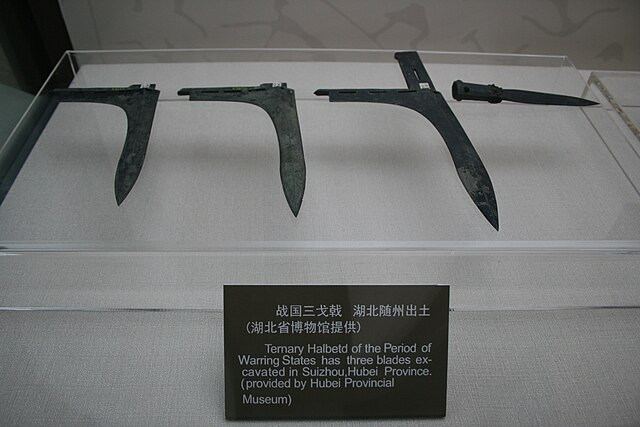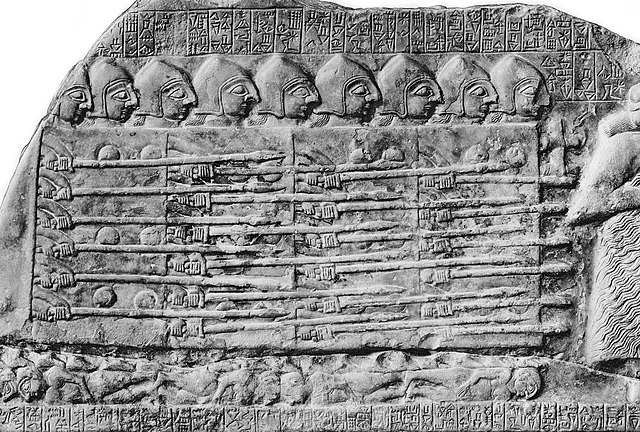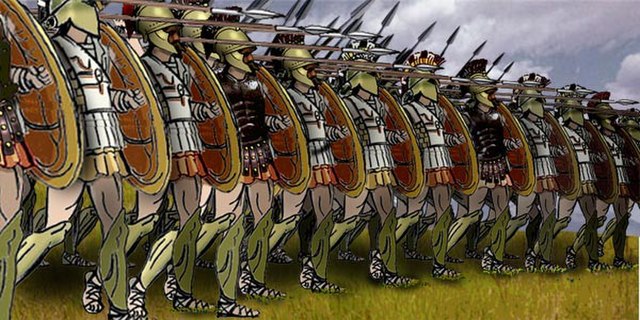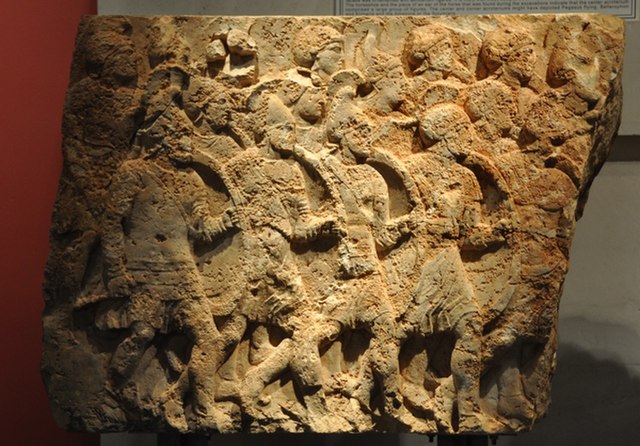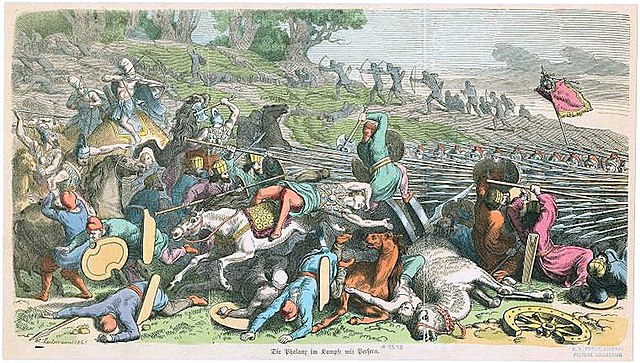A polearm or pole weapon is a close combat weapon in which the main fighting part of the weapon is fitted to the end of a long shaft, typically of wood, extending the user's effective range and striking power. Polearms are predominantly melee weapons, with a subclass of spear-like designs fit for thrusting and/or throwing. Because many polearms were adapted from agricultural implements or other fairly abundant tools, and contained relatively little metal, they were cheap to make and readily available. When belligerents in warfare had a poorer class who could not pay for dedicated military weapons, they would often appropriate tools as cheap weapons. The cost of training was comparatively low, since these conscripted farmers had spent most of their lives using these "weapons" in the fields. This made polearms the favoured weapon of peasant levies and peasant rebellions the world over.
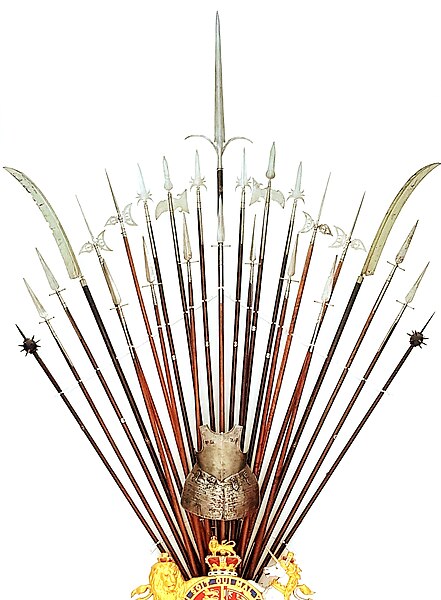
A variety of polearms consisting of morning stars, halberds, partisans, spontoons, war scythes, and a ranseur in the center
Evolution of various European polearms from the 13th to 18th centuries
Shang dynasty polearm
Triple dagger-axe ji, Warring States period
The phalanx was a rectangular mass military formation, usually composed entirely of heavy infantry armed with spears, pikes, sarissas, or similar polearms tightly packed together. The term is particularly used to describe the use of this formation in ancient Greek warfare, although the ancient Greek writers used it to also describe any massed infantry formation, regardless of its equipment. Arrian uses the term in his Array against the Alans when he refers to his legions. In Greek texts, the phalanx may be deployed for battle, on the march, or even camped, thus describing the mass of infantry or cavalry that would deploy in line during battle. They marched forward as one entity.
Sumerian phalanx-like formation c. 2400 BC, from detail of the victory stele of King Eannatum of Lagash over Umma, called the Stele of the Vultures
A modern illustration of the Greek hoplites marching in a phalanx formation
Phalanx in a frieze on the tomb of Pericles, Dynast of Lycia (380–360 BC)
Greek phalanx against Achaemenid troops


